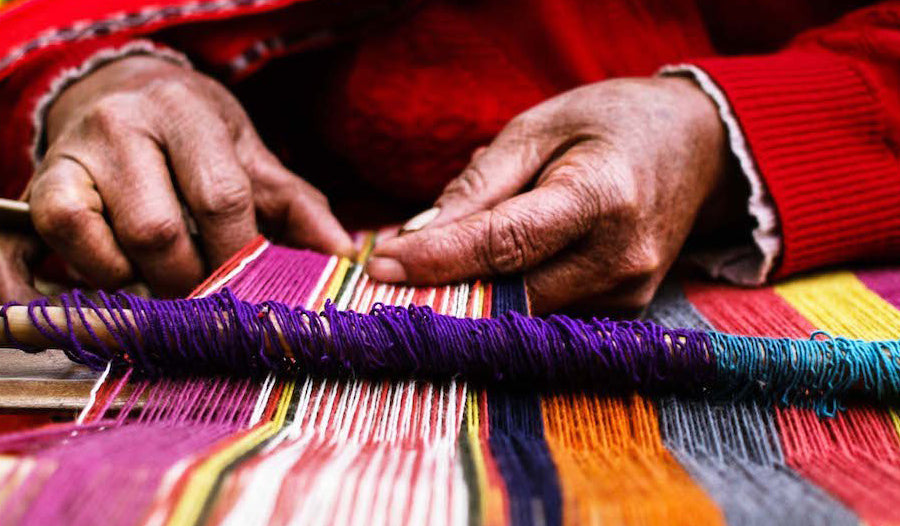
Who Made My Clothes?

When we ask ourselves, ‘who made my clothes?’, the answer most often is women. Here at Selvedge we are passionate about textiles, but unfortunately their production is inextricably linked to the inequalities that plague our society. In the week where we mark International Women’s Day, we consider the impact of the wider fashion industry and what we as individuals can do to support women throughout the textile industry, and limit our impact on the environment through our choices.

Image: An artisan at 7Weaves.
It is now not unknown that the fashion industry is one of the most polluting industries on the planet. Contributing around 2.1 billion tonnes of greenhouse gas emission per year, this is around 4% of all global emissions, and is the same quantity as the entire economies of France, Germany and the United Kingdom combined. In addition to its carbon footprint, fashion contributes to deforestation, biodiversity loss, water pollution, textile waste , and many other ecological crisis points. Climate change and ecological degradation also disproportionately affect women. This is because women around the world are at greater risk of poverty, face barriers to basic human rights such as free movement, and experience gender-based violence which escalates during periods of instability. Women’s jobs are also less resilient in times of crisis than men’s and so their livelihoods —and those of their dependents—are further damaged by extreme weather events and climate catastrophes.

Image: Ly Ta May and Hannah of Tamay & Me, a Vietnam-based clothing company dedicated to raise awareness of Mien skills and help women earn a sustainable living.
So, we know that textile industry malpractices exploit garment workers (80% of whom are women), and that the industry’s ecological impacts ensure that women pay the price for the cheap, throwaway textile items we buy. But what can we do to help? First is of course, to reduce consumption in the first place . Buy second-hand, repair what is broken and can be fixed, and treasure what you already have. Secondly, donate to women’s charities and be an advocate for change. Finally, in reports published by the Trade Fair Live Fair project, it has been shown that “Fair Trade enterprises are reaching a higher level of women’s leadership than conventional business.” You can become a conscious consumer by supporting fair trade businesses and supply chains with environmental and social responsibilities in the foundations that value gender equality. The biggest issues of our time, like environmental crises, global poverty and gender imbalance are interconnected, and can be addressed in tandem with one another—by supporting women and becoming educated, conscious consumers and citizens.
Read more about this topic and find resources on the Fashion Revolution website.
Images above are from companies who took part in the Selvedge World Fair 2020, where we bring together textile traditions from over 60 countries to provide a sustainable alternative to unthought-through purchases.
